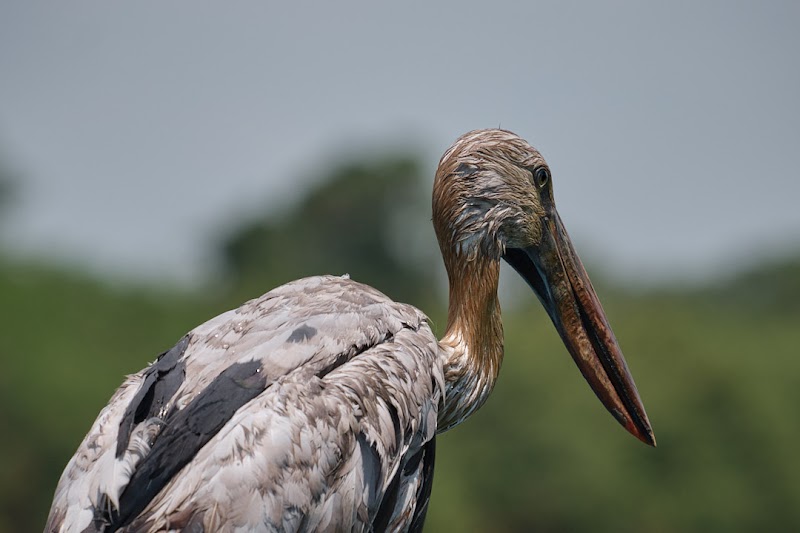The Angkor Wat Half Marathon offers a remarkable way to experience the timeless temple complex of Siem Reap through the rhythm of your own footsteps. Whether you're chasing personal goals or seeking to engage with Cambodia’s cultural heartbeat, this 21-kilometer course blends challenging terrain with unforgettable scenery.
Choose Breathable, Grippy Footwear
The mix of paved roads and dirt trails demands shoes with good traction and ventilation to keep feet comfortable and stable during humid conditions.
Hydrate Early and Often
Stations appear about every 3–5 km, but carry water to stay ahead of thirst and avoid fatigue caused by Cambodia’s tropical humidity.
Start the Race Early
Morning temperatures are cooler; beginning at dawn helps avoid the midday heat which can sap energy quickly.
Respect Local Customs
The race passes sacred temple grounds; dress and act respectfully, and avoid littering or straying off marked paths.
Conquering the Angkor Wat Half Marathon: A Runner’s Guide to Siem Reap’s Ancient Challenge
Every December, the ancient temples of Angkor rise to life—not just through history or art, but through the pounding steps of runners from around the world. The Angkor Wat Half Marathon offers a unique way to engage with Cambodia’s past and present, weaving through the majestic ruins, shaded by age-old trees and scented by damp earth and tropical blooms. Covering 21.1 kilometers, this course isn’t about steep elevation gains—Siem Reap’s flat terrain grants an accessible yet testing run where endurance and pacing matter more than brute strength.
Starting at the iconic Angkor Wat temple complex, the route gradually unfolds through UNESCO World Heritage sites, the shadows of stone towers offering silent encouragement. The course edges along wide dirt trails bordered by a forest awake with chirping birds and curious monkeys, daring you forward. Occasionally, the breeze pushes past, ushering you through timeless corridors where history stays fiercely itself—unyielding, ancient, and deeply alive.
For practical prepping, shoes with reliable grip and good breathability are key—humidity hovers around 70-80% in December mornings, and smooth tarmac switches to uneven dirt paths that demand stable footing. Hydrate regularly; water stations appear every 3-5 kilometers, but carrying a lightweight hydration pack ensures you won't miss a beat. Start early to avoid the midday sun, when the heat contests your speed, and save energy for that final stretch back through Angkor Thom’s gates, where local cheers rise like fresh currents to carry you across the finish line.
Beyond fitness, the run offers an immersive cultural experience. You move through landscapes fiercely intertwined with legend—stone faces carved centuries ago observe your path, silent witnesses to your effort. The Angkor Wat Marathon balances celebration with challenge, making it suitable for committed runners and casual participants eager to test themselves. Whether you chase a personal record or simply want to feel your pulse sync with Cambodia’s timeless heartbeat, this is a race that rewards preparation and presence.
Plan your visit for early December, when cooler mornings greet runners, and the crowds hum with shared excitement. Booking accommodations in nearby Siem Reap puts you mere minutes from the start and finish line, allowing for a restful night before the race and quick recovery after. For those looking to extend the adventure, the temples themselves invite exploration before or after: a chance to stretch tired legs among ruins whose stones echo the same steady persistence it takes to complete this half marathon.
Nearby Trips
All Adventures
Boat Charters
Water Activities
Adventures near Siem Reap
Discover the unique and memorable adventures that make Siem Reap special.
Frequently Asked Questions
What is the exact distance and elevation gain of the Angkor Wat Half Marathon?
The race covers the official half marathon distance of 21.1 kilometers, with minimal elevation gain—mostly flat terrain punctuated by gentle inclines near some temple areas.
Are there water and medical stations along the course?
Yes, water stations typically appear every 3 to 5 kilometers and include electrolyte drinks. Medical personnel are also on-site to assist with injuries or dehydration.
Is the route fully marked and safe to run independently?
The route is clearly marked and monitored during race day. Independent running outside the event should be approached with caution, particularly on dirt trails where footing can vary.
What time does the event start and how long does it typically last?
The marathon usually starts just after sunrise, around 6:00 to 6:30 AM, with most participants finishing between 2 and 3 hours depending on pace.
Can beginners or casual runners participate in the half marathon?
Absolutely. The flat terrain and multiple aid stations make it accessible to beginners, though preparation and pacing awareness are advised.
What cultural etiquette should runners observe during the event?
Respect temple grounds by following marked paths, avoiding littering, and dressing modestly before and after the race. A quiet demeanor is appreciated near religious sites.
Recommended Gear
Lightweight Running Shoes
Breathable with strong grip to handle mixed pavement and dirt trails under humid conditions.
Hydration Vest or Belt
Allows you to carry water and electrolytes to stay hydrated between aid stations.
Sunscreen
Protect skin from intense tropical sun during longer race days and warm-ups.
Lightweight Running Cap
Shields your face from sun and early morning glare without trapping heat.
Local Insights
Hidden Gems
- "Preah Khan Temple's less crowded corridors, offering peaceful running snapshots"
- "The ancient baray (water reservoirs) paths, where early morning mist lingers"
Wildlife
- "Macaque monkeys that often observe runners curiously"
- "A variety of tropical birds flitting between temple stones and tall trees"
History
"Angkor Wat was built in the 12th century under King Suryavarman II and serves as a symbol of Cambodia’s cultural heritage. The half marathon allows runners to experience this history intimately, winding through centuries-old stonework still fiercely enduring."

